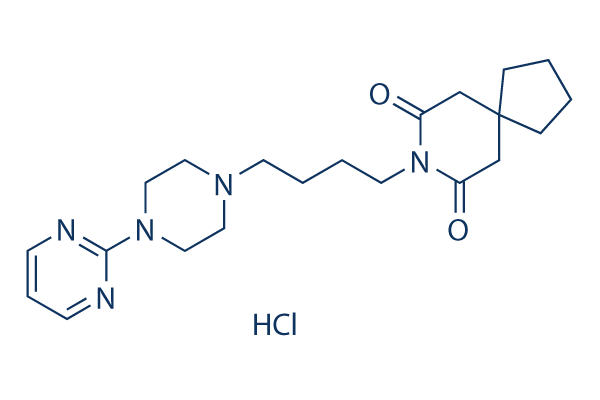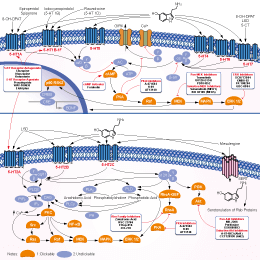
- Bioactive Compounds
- By Signaling Pathways
- PI3K/Akt/mTOR
- Epigenetics
- Methylation
- Immunology & Inflammation
- Protein Tyrosine Kinase
- Angiogenesis
- Apoptosis
- Autophagy
- ER stress & UPR
- JAK/STAT
- MAPK
- Cytoskeletal Signaling
- Cell Cycle
- TGF-beta/Smad
- DNA Damage/DNA Repair
- Compound Libraries
- Popular Compound Libraries
- Customize Library
- Clinical and FDA-approved Related
- Bioactive Compound Libraries
- Inhibitor Related
- Natural Product Related
- Metabolism Related
- Cell Death Related
- By Signaling Pathway
- By Disease
- Anti-infection and Antiviral Related
- Neuronal and Immunology Related
- Fragment and Covalent Related
- FDA-approved Drug Library
- FDA-approved & Passed Phase I Drug Library
- Preclinical/Clinical Compound Library
- Bioactive Compound Library-I
- Bioactive Compound Library-Ⅱ
- Kinase Inhibitor Library
- Express-Pick Library
- Natural Product Library
- Human Endogenous Metabolite Compound Library
- Alkaloid Compound LibraryNew
- Angiogenesis Related compound Library
- Anti-Aging Compound Library
- Anti-alzheimer Disease Compound Library
- Antibiotics compound Library
- Anti-cancer Compound Library
- Anti-cancer Compound Library-Ⅱ
- Anti-cancer Metabolism Compound Library
- Anti-Cardiovascular Disease Compound Library
- Anti-diabetic Compound Library
- Anti-infection Compound Library
- Antioxidant Compound Library
- Anti-parasitic Compound Library
- Antiviral Compound Library
- Apoptosis Compound Library
- Autophagy Compound Library
- Calcium Channel Blocker LibraryNew
- Cambridge Cancer Compound Library
- Carbohydrate Metabolism Compound LibraryNew
- Cell Cycle compound library
- CNS-Penetrant Compound Library
- Covalent Inhibitor Library
- Cytokine Inhibitor LibraryNew
- Cytoskeletal Signaling Pathway Compound Library
- DNA Damage/DNA Repair compound Library
- Drug-like Compound Library
- Endoplasmic Reticulum Stress Compound Library
- Epigenetics Compound Library
- Exosome Secretion Related Compound LibraryNew
- FDA-approved Anticancer Drug LibraryNew
- Ferroptosis Compound Library
- Flavonoid Compound Library
- Fragment Library
- Glutamine Metabolism Compound Library
- Glycolysis Compound Library
- GPCR Compound Library
- Gut Microbial Metabolite Library
- HIF-1 Signaling Pathway Compound Library
- Highly Selective Inhibitor Library
- Histone modification compound library
- HTS Library for Drug Discovery
- Human Hormone Related Compound LibraryNew
- Human Transcription Factor Compound LibraryNew
- Immunology/Inflammation Compound Library
- Inhibitor Library
- Ion Channel Ligand Library
- JAK/STAT compound library
- Lipid Metabolism Compound LibraryNew
- Macrocyclic Compound Library
- MAPK Inhibitor Library
- Medicine Food Homology Compound Library
- Metabolism Compound Library
- Methylation Compound Library
- Mouse Metabolite Compound LibraryNew
- Natural Organic Compound Library
- Neuronal Signaling Compound Library
- NF-κB Signaling Compound Library
- Nucleoside Analogue Library
- Obesity Compound Library
- Oxidative Stress Compound LibraryNew
- Plant Extract Library
- Phenotypic Screening Library
- PI3K/Akt Inhibitor Library
- Protease Inhibitor Library
- Protein-protein Interaction Inhibitor Library
- Pyroptosis Compound Library
- Small Molecule Immuno-Oncology Compound Library
- Mitochondria-Targeted Compound LibraryNew
- Stem Cell Differentiation Compound LibraryNew
- Stem Cell Signaling Compound Library
- Natural Phenol Compound LibraryNew
- Natural Terpenoid Compound LibraryNew
- TGF-beta/Smad compound library
- Traditional Chinese Medicine Library
- Tyrosine Kinase Inhibitor Library
- Ubiquitination Compound Library
-
Cherry Picking
You can personalize your library with chemicals from within Selleck's inventory. Build the right library for your research endeavors by choosing from compounds in all of our available libraries.
Please contact us at [email protected] to customize your library.
You could select:
- Antibodies
- Bioreagents
- qPCR
- 2x SYBR Green qPCR Master Mix
- 2x SYBR Green qPCR Master Mix(Low ROX)
- 2x SYBR Green qPCR Master Mix(High ROX)
- Protein Assay
- Protein A/G Magnetic Beads for IP
- Anti-Flag magnetic beads
- Anti-Flag Affinity Gel
- Anti-Myc magnetic beads
- Anti-HA magnetic beads
- Magnetic Separator
- Poly DYKDDDDK Tag Peptide lyophilized powder
- Protease Inhibitor Cocktail
- Protease Inhibitor Cocktail (EDTA-Free, 100X in DMSO)
- Phosphatase Inhibitor Cocktail (2 Tubes, 100X)
- Cell Biology
- Cell Counting Kit-8 (CCK-8)
- Animal Experiment
- Mouse Direct PCR Kit (For Genotyping)
- New Products
- Contact Us
Buspirone HCl
Synonyms: Buspirone hydrochloride
Buspirone(Buspirone hydrochloride) is a serotonergic (5HT(1A) receptor agonist) anxiolytic drug with some D(2) dopaminergic effect, used for anxiety disorders.

Buspirone HCl Chemical Structure
CAS No. 33386-08-2
Purity & Quality Control
Batch:
S425601
DMSO]84 mg/mL]false]Water]84 mg/mL]false]Ethanol]36 mg/mL]false
Purity:
99.99%
99.99
Buspirone HCl Related Products
| Related Targets | 5-HT1 5-HT2 5-HT3 5-HT4 5-HT6 5-HT7 5-HT5 | Click to Expand |
|---|---|---|
| Related Products | Puerarin WAY-100635 Maleate Serotonin (5-HT) HCl BRL-15572 Dihydrochloride SB269970 HCl Ketanserin RS-127445 Azacyclonol Nuciferine Flopropione SB742457 BRL 15572 BRL-54443 Perospirone hydrochloride Alverine Citrate Ramosetron Hydrochloride SB 271046 hydrochloride PRX-08066 Maleic acid Blonanserin | Click to Expand |
| Related Compound Libraries | FDA-approved Drug Library Natural Product Library Neuronal Signaling Compound Library CNS-Penetrant Compound Library Anti-alzheimer Disease Compound Library | Click to Expand |
Signaling Pathway
Biological Activity
| Description | Buspirone(Buspirone hydrochloride) is a serotonergic (5HT(1A) receptor agonist) anxiolytic drug with some D(2) dopaminergic effect, used for anxiety disorders. | |
|---|---|---|
| Targets |
|
| In vitro | ||||
| In vitro | Buspirone, a clinically effective non-benzodiazepine anxiolytic drug, causes inhibition of firing of these neurons when given by intravenous (ED50 = 0.011 mg/kg, i.v.), intraperitoneal (ED50 = 0.088 mg/kg, i.p.), and intragastric (effective dose = 1.0-20.0 mg/kg, i.g.) injection. Buspirone also inhibits these cells when it is administered to the outside of recorded neurons by microiontophoresis. [1] Buspirone is eliminated primarily by oxidative metabolism, which produces several hydroxylated metabolites, including 5-hydroxy-buspirone and 1-pyrimidinylpiperazine. [2] |
|||
|---|---|---|---|---|
| In Vivo | ||
| In vivo | Buspirone (3 mg/rat, i.p.) dose dependently and completely inhibits shock-induced ultrasonic vocalization after systemic injection and after microinjection into the dorsal raphe nucleus of rats, a brain region rich in somatodendritic 5-HT1A receptors. [3] Buspirone (20 mg/kg) decreases immobility in the rat forced swim test. [4] Buspirone is a serotonergic (5HT(1A) receptor agonist) anxiolytic drug with some D(2) dopaminergic effect in a zebrafish model of anxiety. [5] Buspirone dose-dependently reduces LID and improved l-DOPA-related motor performance due to action at the 5-HT(1A) receptor in l-DOPA-primed rats. Buspirone delayes LID development while improving l-DOPA's anti-parkinsonian efficacy indicating the potential long-term benefits of 5-HT(1A) agonists for reduction of l-DOPA-related side effects in l-DOPA-naive rats. [6] |
|
|---|---|---|
| NCT Number | Recruitment | Conditions | Sponsor/Collaborators | Start Date | Phases |
|---|---|---|---|---|---|
| NCT05511909 | Recruiting | Opioid Use Disorder|Opioid Withdrawal|Opioid Craving|Anxiety |
Johns Hopkins University |
December 15 2022 | Phase 2 |
| NCT03444831 | Completed | Dyspepsia |
Isfahan University of Medical Sciences |
March 1 2016 | Phase 4 |
| NCT02483598 | Terminated | Gastric Bypass |
North Dakota State University|Neuropsychiatric Research Institute Fargo North Dakota |
June 2015 | Phase 4 |
| NCT01699828 | Completed | Smoking Cessation|Tobacco Use Cessation |
Centre for Addiction and Mental Health |
October 2012 | Phase 1|Phase 2 |
| NCT01496612 | Terminated | Anxiety Disorder|Seizures|Epilepsy|Partial Epilepsy|Depression |
National Institute of Neurological Disorders and Stroke (NINDS)|National Institutes of Health Clinical Center (CC) |
November 22 2011 | Phase 2 |
| NCT00873509 | Completed | Autistic Disorder |
Chugani Diane C.|National Institute of Neurological Disorders and Stroke (NINDS) |
May 2009 | Phase 2|Phase 3 |
Chemical Information & Solubility
| Molecular Weight | 421.96 | Formula | C21H31N5O2.HCl |
| CAS No. | 33386-08-2 | SDF | Download Buspirone HCl SDF |
| Smiles | C1CCC2(C1)CC(=O)N(C(=O)C2)CCCCN3CCN(CC3)C4=NC=CC=N4.Cl | ||
| Storage (From the date of receipt) | |||
|
In vitro |
DMSO : 84 mg/mL ( (199.07 mM) Moisture-absorbing DMSO reduces solubility. Please use fresh DMSO.) Water : 84 mg/mL Ethanol : 36 mg/mL |
Molecular Weight Calculator |
|
In vivo Add solvents to the product individually and in order. |
In vivo Formulation Calculator |
||||
Preparing Stock Solutions
Molarity Calculator
In vivo Formulation Calculator (Clear solution)
Step 1: Enter information below (Recommended: An additional animal making an allowance for loss during the experiment)
mg/kg
g
μL
Step 2: Enter the in vivo formulation (This is only the calculator, not formulation. Please contact us first if there is no in vivo formulation at the solubility Section.)
% DMSO
%
% Tween 80
% ddH2O
%DMSO
%
Calculation results:
Working concentration: mg/ml;
Method for preparing DMSO master liquid: mg drug pre-dissolved in μL DMSO ( Master liquid concentration mg/mL, Please contact us first if the concentration exceeds the DMSO solubility of the batch of drug. )
Method for preparing in vivo formulation: Take μL DMSO master liquid, next addμL PEG300, mix and clarify, next addμL Tween 80, mix and clarify, next add μL ddH2O, mix and clarify.
Method for preparing in vivo formulation: Take μL DMSO master liquid, next add μL Corn oil, mix and clarify.
Note: 1. Please make sure the liquid is clear before adding the next solvent.
2. Be sure to add the solvent(s) in order. You must ensure that the solution obtained, in the previous addition, is a clear solution before proceeding to add the next solvent. Physical methods such
as vortex, ultrasound or hot water bath can be used to aid dissolving.
Tech Support
Answers to questions you may have can be found in the inhibitor handling instructions. Topics include how to prepare stock solutions, how to store inhibitors, and issues that need special attention for cell-based assays and animal experiments.
Tel: +1-832-582-8158 Ext:3
If you have any other enquiries, please leave a message.
* Indicates a Required Field
Tags: buy Buspirone HCl | Buspirone HCl ic50 | Buspirone HCl price | Buspirone HCl cost | Buspirone HCl solubility dmso | Buspirone HCl purchase | Buspirone HCl manufacturer | Buspirone HCl research buy | Buspirone HCl order | Buspirone HCl mouse | Buspirone HCl chemical structure | Buspirone HCl mw | Buspirone HCl molecular weight | Buspirone HCl datasheet | Buspirone HCl supplier | Buspirone HCl in vitro | Buspirone HCl cell line | Buspirone HCl concentration | Buspirone HCl nmr







































